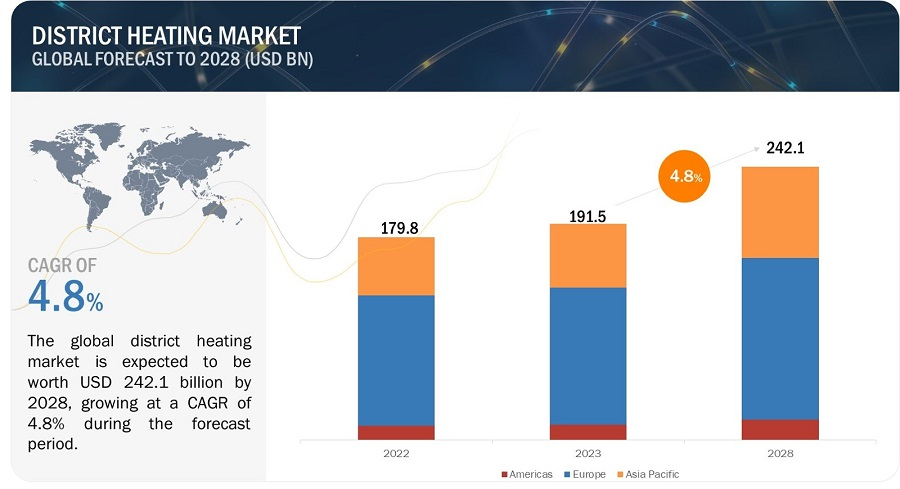Role of Government Regulations in Shaping the District Heating Market
District Heating Market Overview District heating market , also known as centralized heating, involves The generation of heat at a central location and distributing it to residential, commercial, and industrial consumers through a network of insulated pipes. This system is widely recognized for its efficiency, cost-effectiveness, and environmental benefits, making it an integral part of sustainable urban planning. District Heating Market Size and Growth The global District Heating Market is expected to be valued at USD 191.5 billion in 2023 and is projected to reach USD 242.1 billion by 2028; it is expected to grow at a CAGR of 4.8% from 2023 to 2028.This growth is fueled by several factors, including urbanization, the shift towards renewable energy sources, and stringent government regulations aimed at reducing carbon emissions. Key Drivers Energy Efficiency and Environmental Impact : District heating systems are inherently more energy-efficient compared to individual heating solution...



